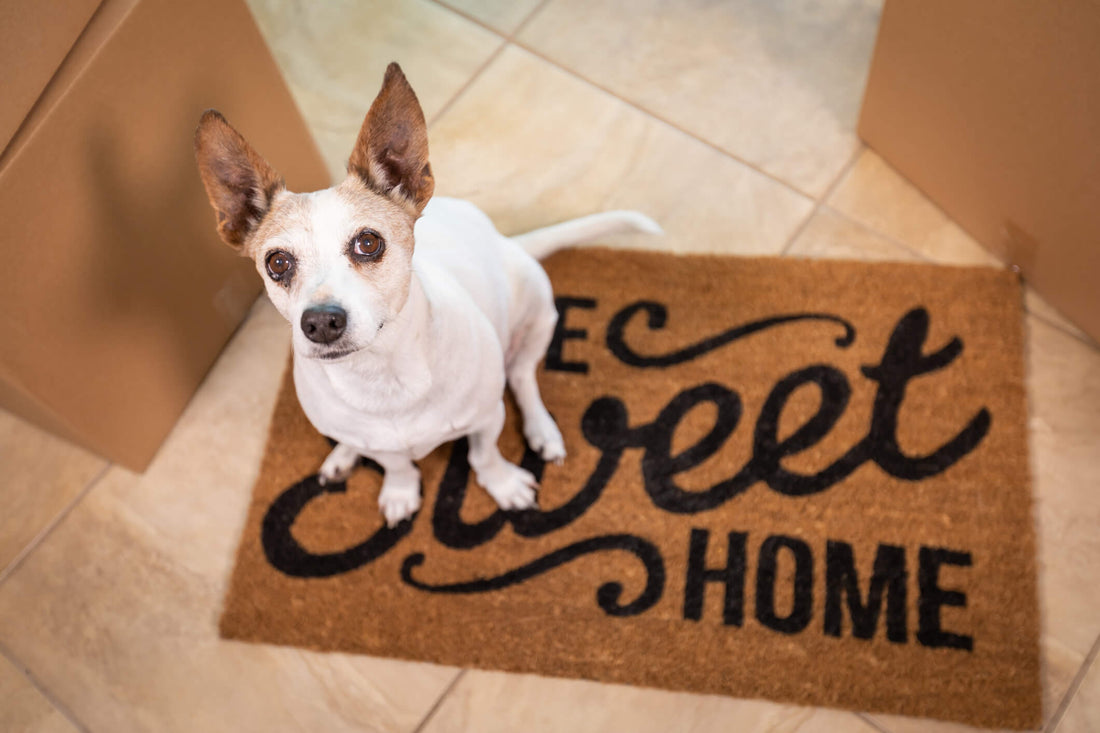
6 Ways to Support Your Rescue Dog’s Transition Home
Rescuing a dog is a noble cause, and many dogs are ecstatic to start their new life beyond the confines of the shelter. However, many recently adopted rescues have a somewhat challenging time adjusting to their new home—especially if they’ve come from abusive or neglectful backgrounds.
Frightened, anxious or downright aggressive behavior is a perfectly normal part of the transition process. Thankfully, with help from a few simple transition tips, your new rescue pup will feel right at home in no time!
Promote a comforting environment
Some amount of confusion and anxiety is to be expected from rescue dogs. Your dog has been thrust into a whole new environment, and they have no idea why! After a couple of weeks, your furry friend will learn it’s safe to relax and let their guard down. Until that day comes, it’s up to you as the pet parent to create an environment that minimizes outbursts of fear or aggression.
Remember the following tips:
- Respect their boundaries: You and the pet are still getting to know each other, so they’ll probably feel safest keeping their distance for a while. Resist the temptation to smother them with hugs and kisses right away. Don’t force interactions, either. If you try to engage in a certain activity and your pup responds with bared teeth or other scared or aggressive body language, it’s a sign they’re not ready yet. Be patient and know the best things come with time.
- Create a safe space: Every dog needs a safe space they can run to when they’re feeling scared. This could be a crate, laundry room, bedroom closet or any secluded corner that’s quiet and far away from other household members. Safe spaces need soft bedding—preferably blankets and towels that are left over from the rescue dog’s kennel. Set up this spot before the dog arrives home so you’re prepared in case their anxiety flares up.
Respond to fear the right way
Your new pup will likely remain on edge during the first week, at least. People who adopt rescue dogs should be especially cognizant of potential triggers, since rescues often have a traumatizing past and are more prone to getting spooked. Here’s how to properly respond to troubling situations so the dog can return to a calm demeanor:
- Stay calm: Dogs are highly sensitive to a person’s energy. If you start to feel frustrated or anxious, so will they. Help your dog calm down by speaking to them in a soft tone of voice. The words you choose don’t really matter—dogs respond not to what you say but how you say it. Slowly approach your dog and offer gentle petting to let them know everything will be okay.
- Focus on good behavior: Dogs often revert to old habits when they’re overwhelmed with fear. They might pee in the house or ignore basic commands. Punishing bad behavior won’t get your pup to change their ways. Instead, reward good behavior with praise and treats. Remind yourself that such behavior is only temporary and will subside as the rescue pup adjusts to their new home.
Help them overcome separation anxiety
Your rescue dog will depend on you for love, food and protection. Understandably, a new pup might freak out when you leave the house. Part of any dog’s training is helping them realize you’ll always come back home so they no longer experience separation anxiety. Here’s some advice that’s proved helpful for many pet parents:
- Give the dog a calming supplement: Supplements help treat a vast range of physical ailments. What few owners realize, though, is that supplements can also support a dog’s mental health. Calming supplements are packed with vitamins and herbs that have been shown to reduce separation anxiety and promote a relaxed demeanor. These are most effective given shortly before you have to run errands or go to work.
- Provide consistency with a routine: Dogs feel a lot more at ease when they know what’s going to happen next in their daily schedule. Set your new rescue dog on a consistent routine as soon as they arrive home to expedite the transition process. Meal times, potty breaks and exercise should have a designated time every day. The dog will learn when you’re about to leave, but they’ll also learn when you return home and they get time to walk or play!
Don’t worry if your rescue dog has a difficult time adjusting to their new home. It’s normal for dogs to act on feelings of anxiety, fear or aggression. Remember, every dog is different—your new furry friend might feel perfectly at ease after a week, or they could still feel wary a month into the transition process. Trust in the bond you two established at the shelter and let that guide you through these first few weeks.

.jpg)

